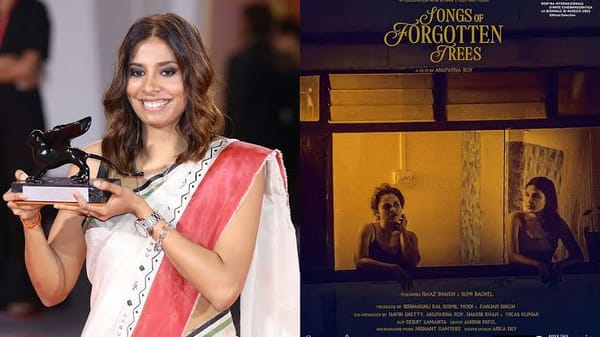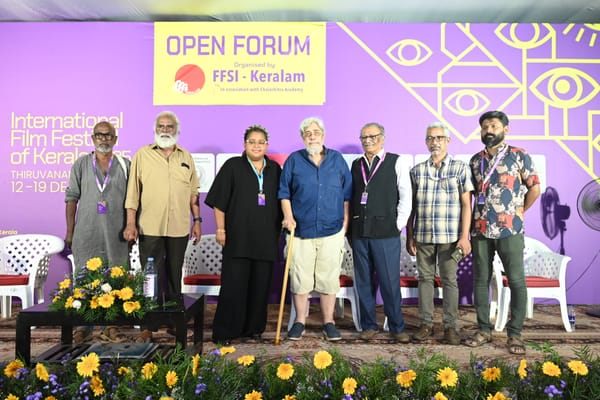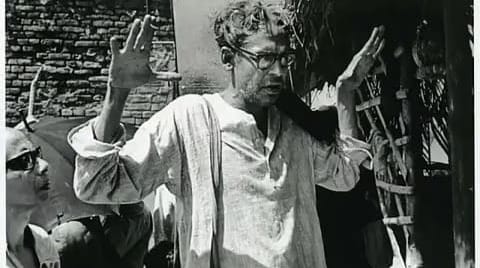Singapore Youth Festival 2014 : Indian Dance at its best
Classical, semi classical, contemporary, folk; they danced it all out in a splendid array. The Singapore Youth Festival (SYF) Arts Presentation Indian Dance Category was indeed captivating in every way. Considering the hours of hard work put in by the students, the immense effort taken by each chore

Classical, semi classical, contemporary, folk; they danced it all out in a splendid array. The Singapore Youth Festival (SYF) Arts Presentation Indian Dance Category was indeed captivating in every way. Considering the hours of hard work put in by the students, the immense effort taken by each choreographer to make their dance piece “better than the best” made it all the more appealing. Dazzling costumes, synchronised dancing, fluid movements made watching the performances an extraordinary treat.
I got introduced to this Festival when my daughter became a participant a few years back and since then I have become a regular and compulsive viewer. The simple reason being that I love it! It happens in April/May every year alternating between Primary Schools and Secondary Schools with Junior Colleges included. This is an inter-school arts performance of Indian dance Co-curricular Activity (CCA).The month-long SYF Arts Presentation features close to 800 presentations staged by the various performing arts CCAs. SYF falls under the purview of the Arts Education Branch (AEB), of the Ministry of Education (MOE). This year was Primary Schools’ show time.
79 schools had participated in the Indian dance category. It was spread over three days and held at Kallang Theatre. The music chosen for the various presentations included classical, semi classical, folk genres and the presentations had typically classical pieces along with fusion, contemporary and others. The folk items were replete with lively folk songs, traditional folk dances from different parts of India and attractive props like kavadi, peacock feathers, boats, lighted lamps, garlands, scarves were thoughtfully used. The various Hindu Gods dressed in resplendent costumes made their appearances as well, as glorious tributes were made to them. There were repetitions in the music but that added to the experience as one can appreciate how various choreography can be set to the same music. Catchy and vibrant filmy songs and music also found place. Most of the presentations had twenty over students.
There are many Indian dance instructors, choreographers active in this field. Each instructor handles a minimum of four to five schools. Coming up with varied songs and matching choreography and teaching this to a large group of children not necessarily trained in Indian dance is no ordinary feat.
I caught up with some of the dance instructors. Music and choreography being important factors I raised the query about how they decided on that.
“I select my themes and music for schools according to the ability of my children in each school. Also in accordance with the themes used in the previous SYF. I make sure I do not repeat the same theme for each school. If a particular theme and song is difficult for my students, I do not push them or forcefully teach or choreograph a dance item, as it only stresses the children.” Ms Bavani d/o Gurmit Singh, dance instructor and choreographer has been taking part in the SYF since 2008. She handled 6 Primary schools this year: Fuhua, Queenstown, Shuqun, Yio Chu Kang, Qihua and Xishan.
“Firstly, the school I am working with has a large influence on the way I choreograph. The amount of hours the CCA work plans permit for practices and the level of motivation of the students matter. Also their strength, age group and also the preference of the teacher in charge. I usually attempt classical items with those schools which are able to pump in more hours of practice. Budget allocated also plays a major role in the choice of the dance.” Ms Kamariah Yusuf dance instructor and choreographer has been in the SYF arena for 11 years, since 2003. This year she handled 5 Primary schools East Spring, Tampines North, Tampines, White Sands and Edgefield.
“The decision about choosing songs is totally on the calibre of the students and also in consultation with the school teachers. Everyone must like the song or music and everyone must feel the vibration. Once it is decided then I will go ahead with the choreography.” Ms Vasugidevi Ganesan dancer instructor, choreographer has been in the field for many years now and has handled 4 schools this year.

Regarding the Awarding : Previously it was known as SYF Central Judging and now it has been renamed SYF Arts Presentation along with a restructuring in the award structure from titles previously bestowed - gold with honours, gold, silver, bronze and certificates of participation to just three certification levels: distinction, accomplishment and commendation. This in order to make it make the art more appreciative, participative and interest oriented than competitive. To me as a mother it makes sense as it relieves my daughter of the stress involved but as a dance enthusiast I wonder whether the removal of usual ruthless pursuit for excellence will make the festival sombre and lose its lustre progressively.
The awarding system has been revamped since last year. Do you find this has lowered the general standard of the competition?
“The Singapore Youth Festival Arts Presentation as its name suggests is not a competition. It is an assessment and benchmarking of each individual school to help them gauge their progress in their dance presentation. The main purpose is for the students to be exposed to Indian culture and fine arts through their participation in this activity. Above all, the students’ need to be enriched and need to enjoy their participation in dance. The award system is merely a progress report. I do not think the present award system will lower the standard of the presentation but in turn will encourage more schools and students to participate in SYF as its goals are directed towards the artistic growth of the students and not the artistic merit of their presentation. The high standards have already been set and I think all schools and instructors are fully committed in showcasing only their best.” Mr Ajith Bhaskaran Dass dancer, instructor, choreographer, artistic director of Suvarna Fine Arts in Malaysia has been in the panel of adjudicators since 2006.
Also in the panel since 2008, Dr Siri Rama dancer, instructor and choreographer based in Singapore and founder-director of Kanaka Sabha Performing Arts Centre, Mumbai had this to say:
Can you share with us your experience in judging the SYF competitions?
SYF is an adjudicating process and not a competition - this is something that the Ministry of Education CCA branch emphasises to the adjudicators and participants every time. Briefing sessions before the SYF introduce adjudicators to rubrics or criteria for grading the groups. The groups are encouraged through a series of workshops and briefings to the dance instructors throughout the year- where they are encouraged to think of dance as an education rather than a onetime win or lose situation. The adjudicators are not involved in either advising or instructing the dance groups before the competition. The feedback given by the adjudicators is passed on to the schools after the process for improvement of dance standards. Over the years I have noticed that the themes chosen are not just traditional themes but nowadays feature more contemporary themes as well. There is also a more concerted effort especially at the junior level to have age appropriate themes. For example a theme this year was a song in which they emphasised the value of education and treating everybody equally. Another trend in recent years is a broader spectrum of Indian dances - for example Bhangra, Assamese, Nepalese, Gujarati are being featured besides the locally popular dances like Kummi, Kollatam, Kavadi, Kaikattukali etc. Credit goes to the CCA branch and the adjudicators over the years for sincerely looking out for the safety standards of children when they dance. They insist on proper training being given and not just making them do acrobatics without guidance. The SYF is a learning experience for all concerned - dance instructors, students, adjudicators and audiences.
Do you judge competitions in other countries? If you do, how do you find the standard of SYF comparatively?
I have judged many competitions in India, in Mumbai specifically; classical, college folk dance and others over the years. I have been a judge for the CRY organisation in Philadelphia US where I was co judge with the late legend film star Padmini. And I have been invited to grade at beauty pageants in Hong Kong also as examiner in various institutions in Singapore.
I think some of the groups have shown very good standards and are on par with groups seen elsewhere. I would say the SYF differs in the fact there is a concerted effort to treat dance like an education rather than mere entertainment or as one stop win or lose competition. This changes the way in which adjudicators and dance instructors approach teaching and grading dance. SYF is a process driven approach - so sometimes one can see changes in small ways but over a period of time it will definitely have a good impact on the students. One sees Chinese students performing Indian dance and they do a very good job many times. I personally believe that it is commendable that outside India such a concerted effort is being made to study and develop Indian dance in schools at a local level. I don't know of any other place which has something like this. It is so uniquely Singapore. Talking with my co adjudicators from India over the years like Mr Balagurunathan or Dr Urmimala Sarkar I find that they also have high praise for the efforts of the CCA.
Talking about areas that needed improvement according to me was the announcements. The title of a presentation speaks about the dance itself and what the choreographer means to convey through the presentation. This time though the students did the announcing, due to poor enunciation most of the times I was unable to catch the title. So that effect was lost on me.
Before I wind up,
How do find the participation of students of other races, Malay and Chinese as they are not trained in Indian dance?
“I think arts is the easiest way to learn about another culture and I encourage their participation because it teaches children to appreciate ethnic differences. I embrace all who are willing to learn and experience Indian dance.” Ms Kamariah Yusuf
True, Mdm Jia whose little son Pah Sheng Yang, 8 years was the only boy and the only Chinese in their presentation Dynamic dance from Punjab from his school, Guangyang Primary, said fondly, “He felt a bit embarrassing being the only boy in the group but he is always telling me he is very fond of Indian dance.”
The SYF 2014 Arts Presentation for Indian dance, Primary School level, was held at Kallang Theatre from 15th to 17th April.
Photo Credits: MOE




